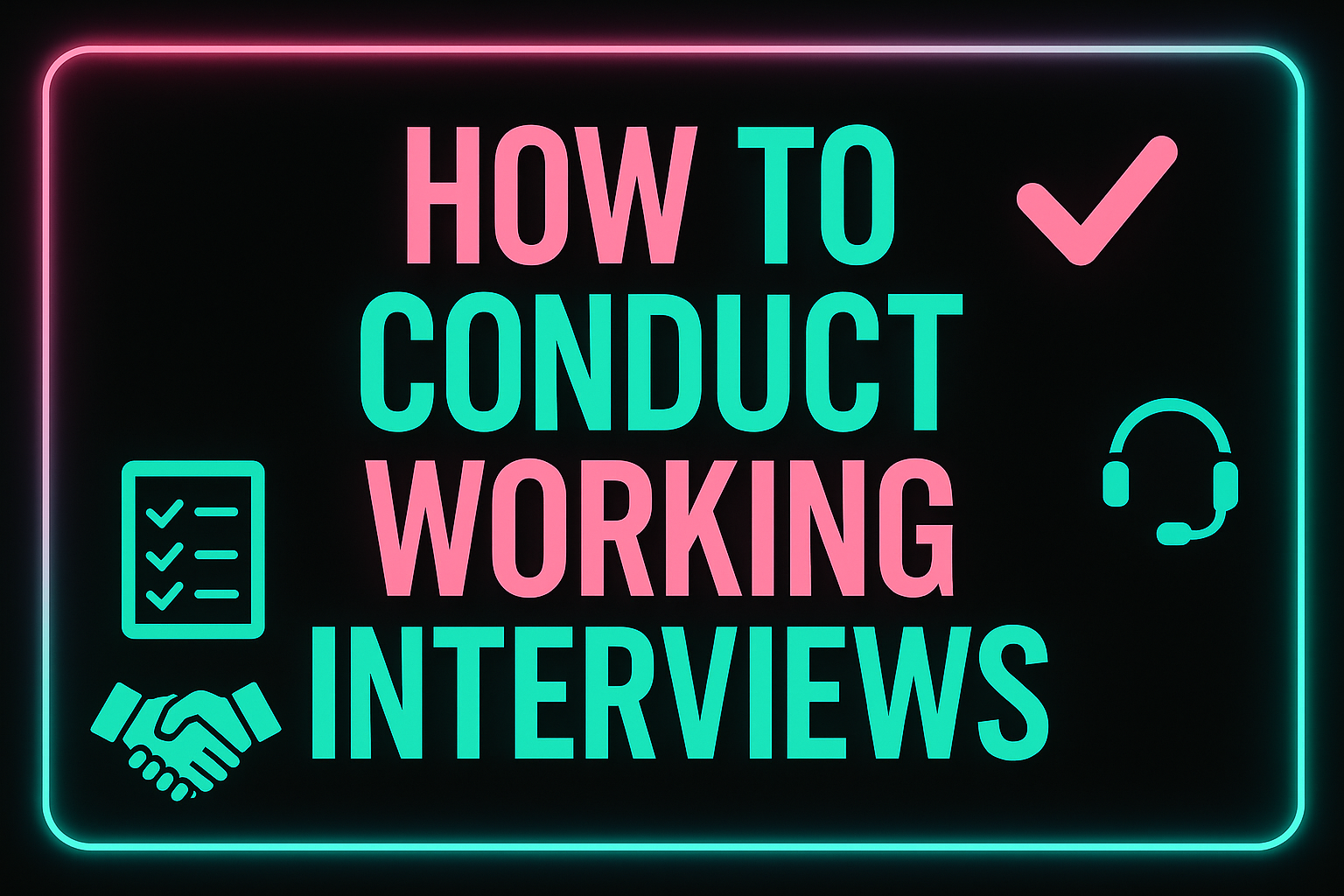Hiring in dentistry isn’t like hiring in other industries. A resume tells you very little about how someone will handle a full patient load, a last-minute cancellation, or a stressed-out colleague.
That’s why many clinics use working interviews—an opportunity to see candidates in action before making a formal offer.
But here’s the catch:
Most clinics don’t structure their working interviews to actually predict success.
Too often, working interviews become casual observations: “She seemed nice enough” or “He seemed confident.” But hiring based on vague impressions invites risk. It leads to costly mis-hires, turnover, and team disruption.
At Mint Ops, we guide clinics to rethink working interviews—not as a casual trial, but as a structured evaluation tool that reveals real fit, performance, and emotional intelligence.
Here’s how to do it right.
1. Set Clear Expectations Before the Candidate Arrives
The first step to an effective working interview happens before the candidate even walks through your doors.
Ask yourself:
- What specific skills, attitudes, or behaviors do we want to observe?
- What would a successful trial look like for this role?
It’s not enough to “see how they do.” Be clear. Are you assessing:
- Chairside efficiency?
- Patient communication and rapport?
- Flexibility under changing conditions?
- Ability to work as part of a team?
Communicate expectations to the candidate as well. Let them know:
- What procedures or tasks they’ll be involved in.
- What level of independence you expect (shadowing vs. leading).
- Who they’ll be working with most closely.
When expectations are vague, candidates flounder—and you miss the chance to see them at their best.
2. Create a Realistic but Supportive Environment
Remember, a working interview is still a test drive—and nerves are natural. A hostile, chaotic, or overly critical environment doesn’t show you how candidates will behave once they settle in. It just shows you how they handle unnecessary stress.
Best practices for setting the tone:
- Pair candidates with a “buddy” team member to guide them through the day.
- Introduce them warmly to the rest of the team.
- Give them short, clear tasks first before escalating complexity.
- Check in midway through the trial: “How are you finding the flow so far?”
Candidates who are treated with respect will show their true selves—and you’ll get a much more accurate read.
3. Observe, Don’t Just Supervise
During the working interview, watch for more than technical ability. Pay attention to:
- Body Language: Does the candidate move confidently but respectfully?
- Team Interaction: Do they ask questions, offer help, or remain isolated?
- Patient Interaction: Are they warm, rushed, dismissive, or personable?
- Adaptability: How do they handle minor disruptions or surprises?
Most importantly, observe communication:
- Do they clarify if they’re unsure—or bluff their way through?
- Are they receptive to quick corrections?
- Do they thank others for assistance?
These small cues predict future behavior far better than how well they polish a crown margin or chart a perio reading on day one.
4. Involve the Whole Team in the Evaluation
After the trial, gather input from every team member who interacted with the candidate—not just the dentist or office manager.
Ask your team:
- Would you want to work with this person every day?
- Did they feel like they genuinely tried to integrate with the team?
- Were there any small concerns that might grow into big ones?
Sometimes an assistant will pick up on controlling tendencies that a dentist misses. Sometimes the front desk notices an aloof attitude with patients. Trust the collective experience of your team—they’re the ones who’ll feel the daily impact.
Important: Don’t let one person’s opinion dominate the feedback. Look for patterns.
5. Evaluate Both Skill and Culture Fit
After gathering feedback, weigh two critical dimensions:
- Skill Fit: Can they competently perform the tasks required?
- Culture Fit: Do they align with the clinic’s pace, values, and communication style?
Both matter. A highly skilled candidate who alienates the team is a ticking time bomb. A warm, kind candidate who struggles with core procedures might need training—but if their attitude is right, they’re often worth the investment.
Remember: Skill gaps can often be fixed. Culture gaps rarely can.
6. Provide Closure and Feedback
Regardless of the outcome, always close the loop professionally. Candidates appreciate clear communication about next steps. If it’s not a fit, a short but gracious message builds goodwill and protects your clinic’s reputation.
Something simple like:
“Thank you for spending time with our team. We’ve decided to move forward with another candidate whose experience more closely matches our current needs.”
If you do want to proceed, follow up quickly to maintain momentum—and signal that your clinic values clarity and respect.
Final Thoughts: Working Interviews Are a Window—Not a Mirror
A working interview isn’t about perfection. It’s about patterns:
- Do they ask questions when unsure?
- Do they naturally seek collaboration?
- Do they stay composed when plans change?
If you structure your working interviews intentionally, you’ll see those patterns clearly—and you’ll make smarter, longer-lasting hiring decisions.
At Mint Ops, we specialize in helping clinics build recruitment processes that reduce turnover, strengthen culture, and find the right people faster.
Because when you hire well, your whole practice thrives.


Comments are closed